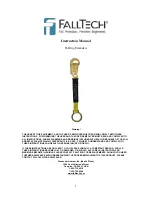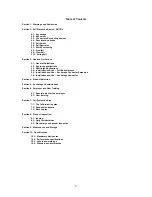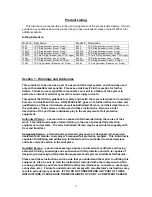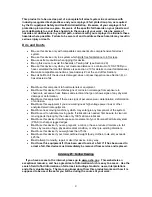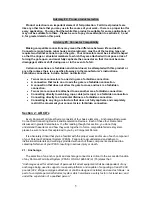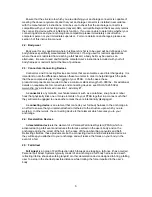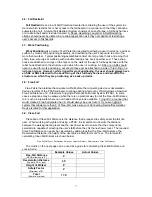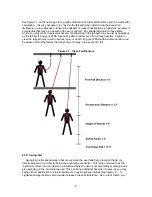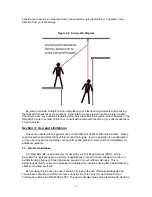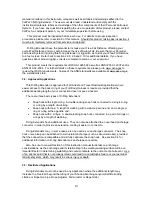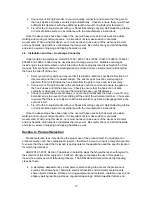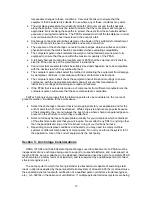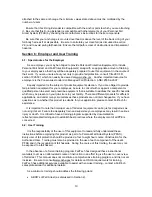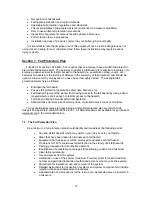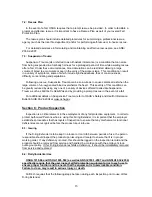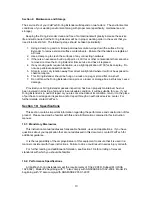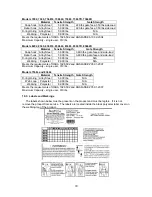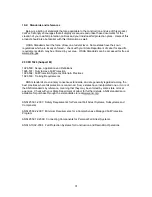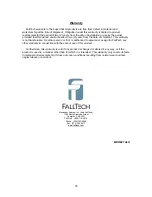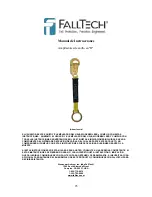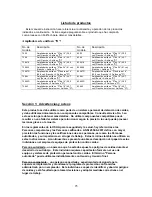
12
2. Connect your D-ring Extender to your anchorage connector and ensure that the gate on
the hook closes and locks securely and automatically. Check to ensure that you will have
sufficient fall clearance with the additional length of your D-ring Extender factored in.
3. Tie-off to the D-ring Extender with your Shock-Absorbing Lanyard, Self-Retracting Lifeline
or Vertical Lifeline system in accordance with the manufacturer’s instructions.
Once the above steps have been taken, the user will have access to their work area while
walking and moving at normal speeds. It is important not to make sudden or dramatic
movements! When using this device, care must be taken to be aware of the work environment
and any hazards, obstructions or obstacles that may exist. Be careful of any and all fall hazards
and also be aware of slipping and tripping hazards as well.
3.6: Installation and Use – Anchorage Connector
Under certain circumstances, model #’s 7202 / 8202, 7366 / 8366, 736616 / 836616, 736624 /
836624 and 73663 / 83663 may be used as an anchorage connector. Suitable anchorages
include rigid structural members or structural rebar that are properly rated (see Section 5 of this
manual), that are horizontal to the walking/working surface and are closed-ended (will not allow
the hook to slide off of the end).
1. Select your anchor point and ensure that it is properly rated (as specified in Section 5 of
this manual) and that it is closed-ended. The anchor point must be small enough in
diameter that it will fit inside the hook and allow the gate to close and lock securely.
2. Connect your D-ring Extender to the anchorage or anchor point and ensure the gate on
the hook closes and latches securely. Check to ensure that the hook can not slide
vertically or diagonally in a manner that would increase your fall distance.
3. Check to ensure that your anchorage or anchor point captivates the hook on your D-ring
Extender so as to prevent it from sliding off the end of the structural member. Check also
to ensure that there is not object or obstructions which may force a disengagement in the
event of a fall.
4. Tie-off to the D-ring Extender with your Shock-Absorbing Lanyard, Self-Retracting Lifeline
or Vertical Lifeline system in accordance with the manufacturer’s instructions.
Once the above steps have been taken, the user will have access to their work area while
walking and moving at normal speeds. It is important not to make sudden or dramatic
movements! When using this device, care must be taken to be aware of the work environment
and any hazards, obstructions or obstacles that may exist. Be careful of any and all fall hazards
and also be aware of slipping and tripping hazards as well.
Section 4: Product Selection
Product selection is as important as the proper use of the product itself. Poor judgment in
product selection can have catastrophic results – therefore be sure to consult a competent person
to ensure that the product that is issued is appropriate for the application and the specific location
for which it is intended.
ANSI Z359.1-2007, Section 7 describes in detail the steps that should be taken with regard to
the selection of fall arrest equipment. FallTech strongly encourages the use of this guide by
those who employ users of fall arrest products. The ANSI standard recommends the following
steps be taken:
A workplace assessment by a competent person taking into account the presence of
sources of extreme heat, chemicals, electrical hazards, environmental contaminants,
sharp objects, abrasive surfaces; moving equipment and materials, unstable, uneven and
slippery walking/working surfaces; unguarded openings; climatic/weather factors and

